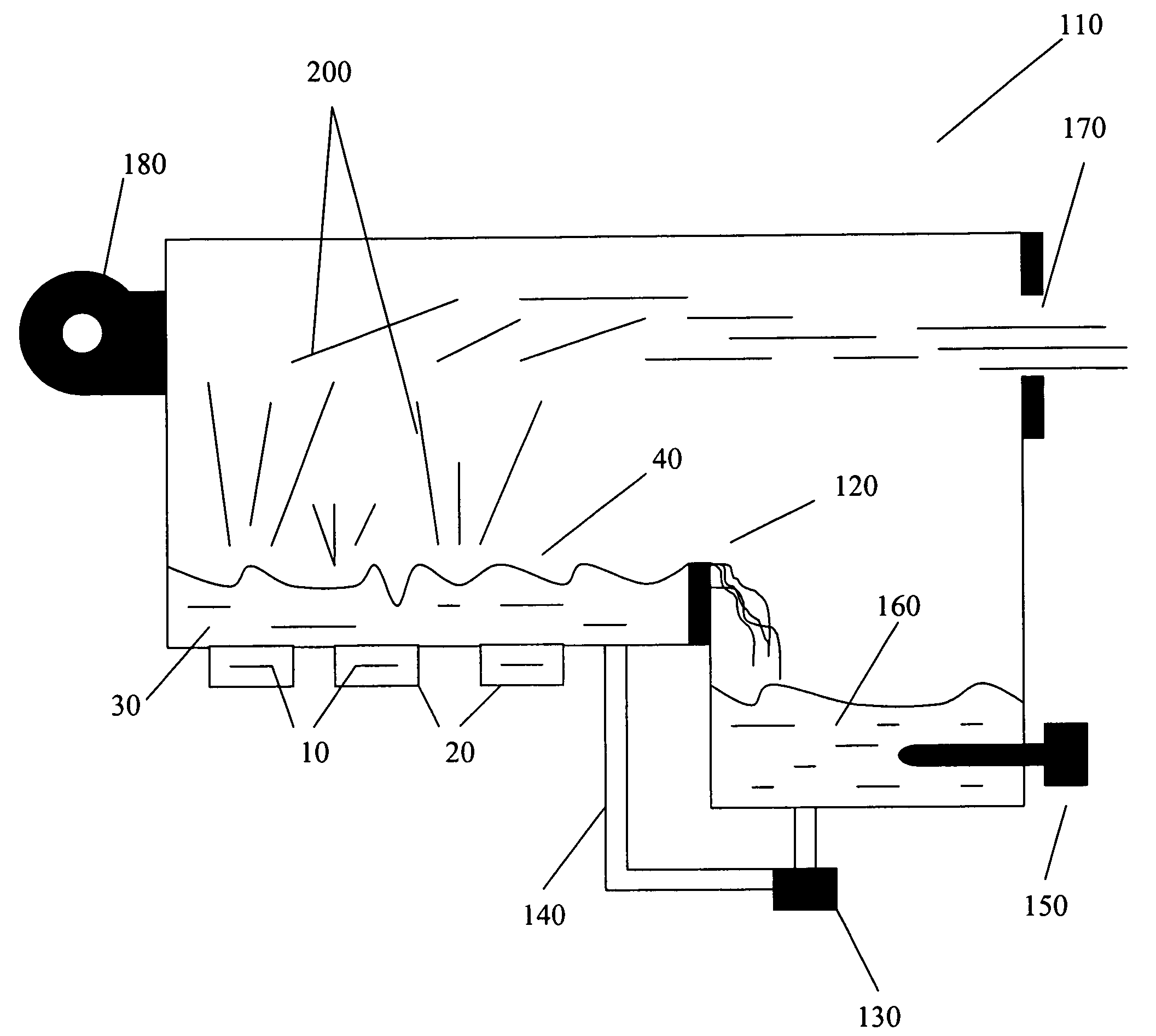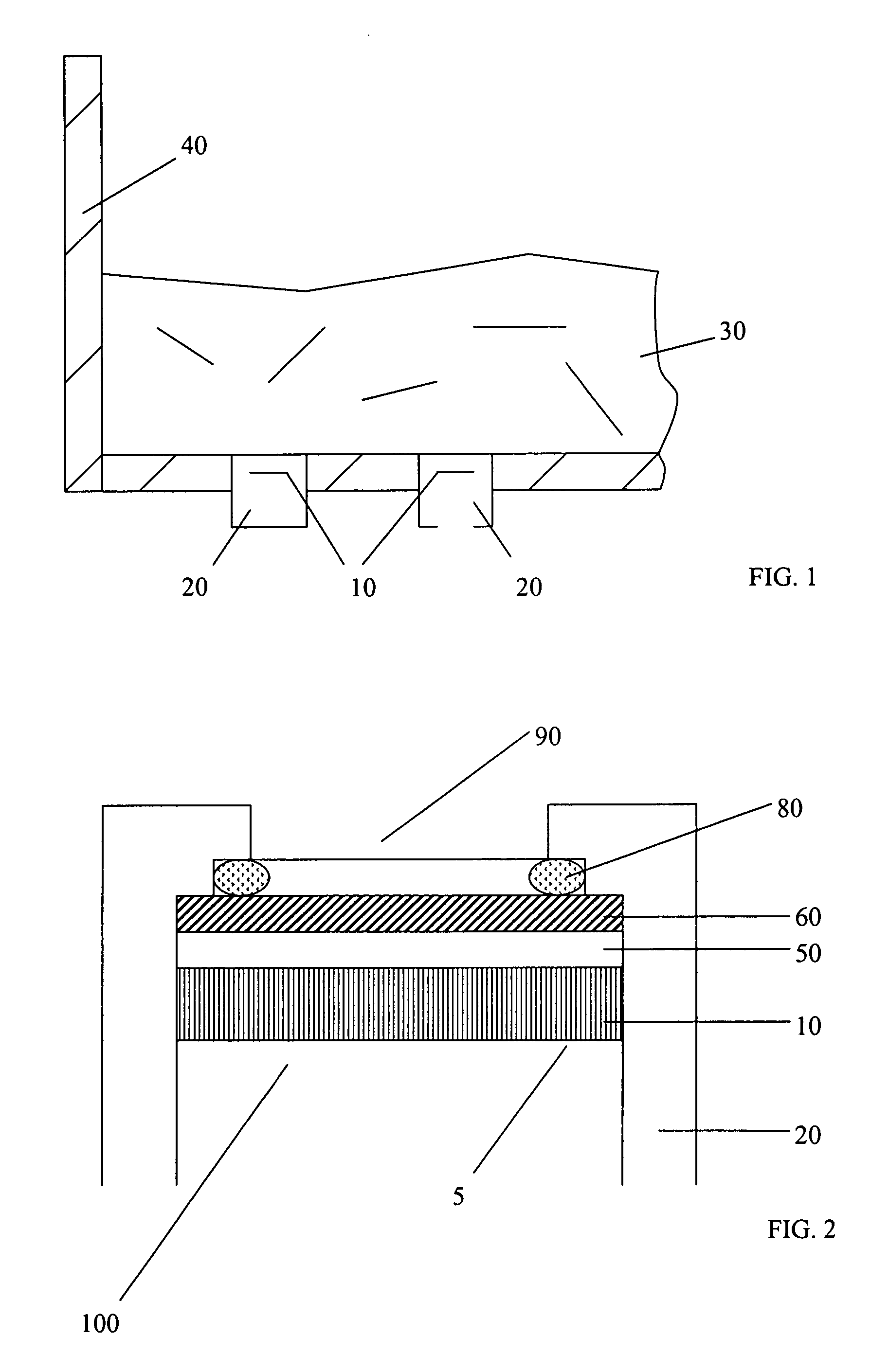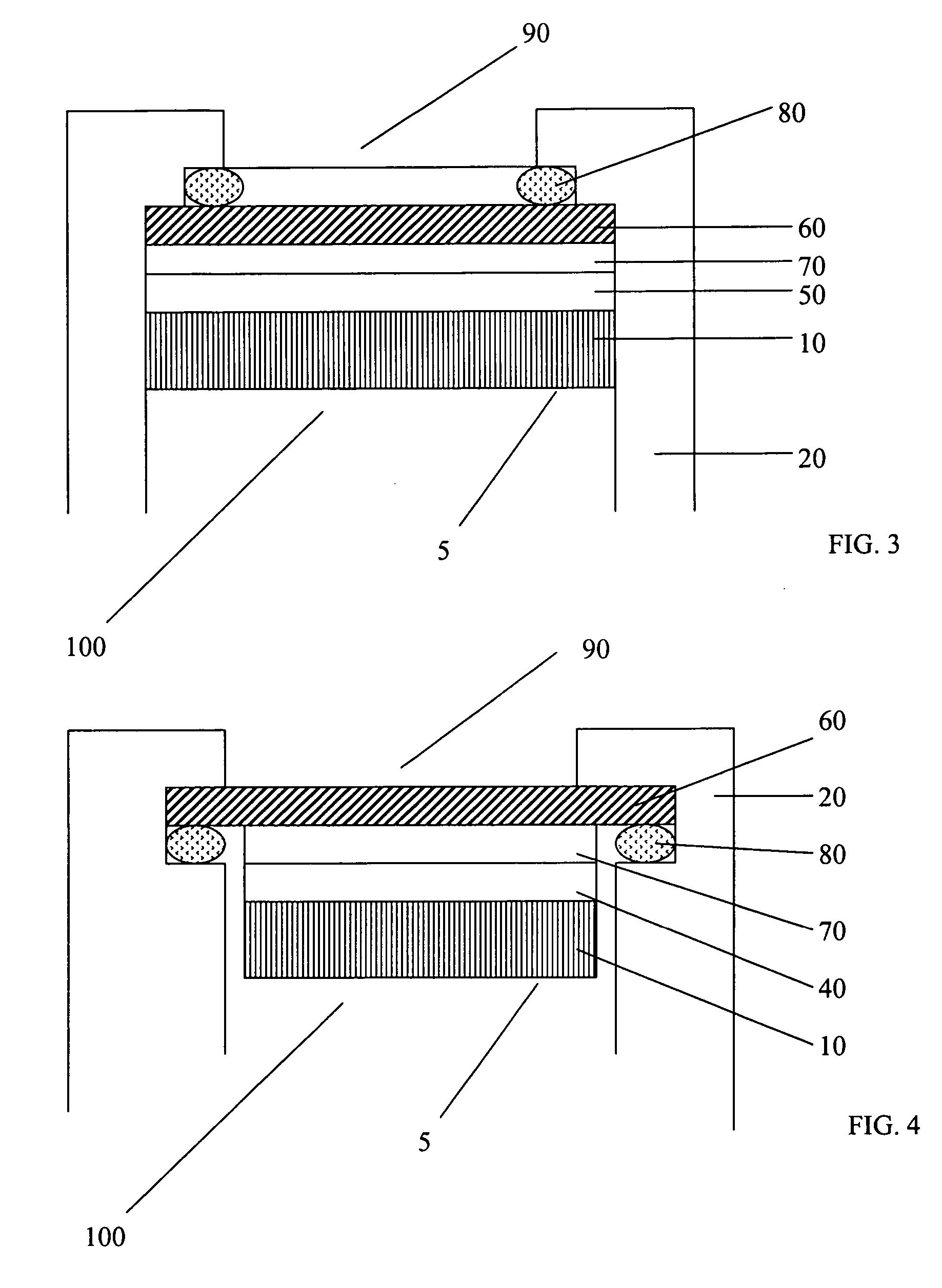Method and apparatus for optimizing aerosol generation with ultrasonic transducers
a technology of ultrasonic transducers and aerosols, applied in water installations, disinfection, construction, etc., can solve the problems of aerosol formation from liquid their performance, noticeable deterioration of transducers, etc., and achieve the effect of reducing the effectiveness of transducers
- Summary
- Abstract
- Description
- Claims
- Application Information
AI Technical Summary
Benefits of technology
Problems solved by technology
Method used
Image
Examples
example 1
[0067] To produce the transducer assembly, the protective barrier, in this case being glass, was first ground to a specified thickness and then adhered to the transducer using an adhesive. Pressure was then placed on the protective barrier for a period of time to aid adhesion of the protective barrier to the transducer.
example 2
[0068] The protective barrier was manufactured of a quartz glass with a thickness of between about 0.001 inches and about 0.125 inches, wherein the thickness is not n / 2 of a wavelength (λ) of a transmitted pressure (energy) that could be generated by the transducer(s), wherein n is any integer, or about 0.036 inches at an operating frequency between about 1.76 MHz to about 1.94 MHz. The aerosol output greatly exceeded the target of 800 milliliters of aerosolized liquid per hour with an average output of 1500 milliliters per hour. Thinner glass material may and has been used, but the thinner the glass is, the more difficult (or impractical) it is to implement due its propensity for breakage as well as increased difficulty to machine or process.
example 3
[0069] The effectiveness of various quartz glass barrier thicknesses was determined based upon various operating frequencies. Amplifier ENI-2100L and heater 600 W Watlow “firerod” were used. The temperature of the water solution, which was aerosolized, was heated to about 105° F. Table 1 sets forth the results.
TABLE 1FrequencyWave-Protective BarrierAerosol Results: Output(MHz)lengthThickness (inches)Observations1.870.3110.0362138 ml per hour1.850.3080.0361769 ml per hour1.860.3090.0362064 ml per hour1.890.3140.0361622 ml per hour1.890.3140.0361843 ml per hour1.880.3130.0360 ml per hour; transducerburned1.900.3160.0361460 ml per hour1.840.3060.0361695 ml per hour1.850.3080.0361500 ml per hour1.860.3090.0361825 ml per hour1.890.3140.0361870 ml per hour1.900.3160.0361550 ml per hour1.900.3160.0361550 ml per hour2.110.2830.029Estimated 1.830.3380.0401971 ml per hour1.810.3340.0402138 ml per hour1.830.3380.0402005 ml per hour1.680.3880.0501769 ml per hour1.910.8470.0960 ml per hour; tr...
PUM
| Property | Measurement | Unit |
|---|---|---|
| thickness | aaaaa | aaaaa |
| thickness | aaaaa | aaaaa |
| thickness | aaaaa | aaaaa |
Abstract
Description
Claims
Application Information
 Login to View More
Login to View More - R&D
- Intellectual Property
- Life Sciences
- Materials
- Tech Scout
- Unparalleled Data Quality
- Higher Quality Content
- 60% Fewer Hallucinations
Browse by: Latest US Patents, China's latest patents, Technical Efficacy Thesaurus, Application Domain, Technology Topic, Popular Technical Reports.
© 2025 PatSnap. All rights reserved.Legal|Privacy policy|Modern Slavery Act Transparency Statement|Sitemap|About US| Contact US: help@patsnap.com



